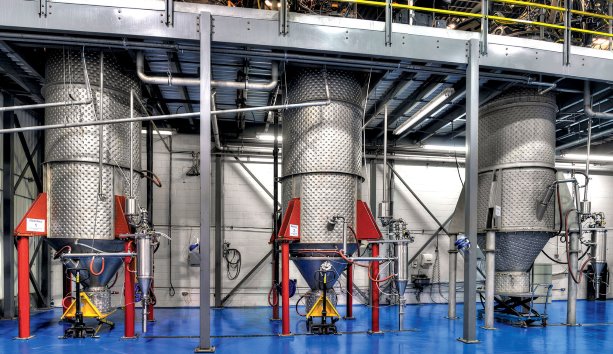The time is right to be in the additive manufacturing business, says a Montreal executive, especially when one’s product is being sold into the booming aerospace sector.
That’s exactly the cross-section where Montreal-based manufacturer Advanced Powders & Coatings (AP&C) finds itself. Demand for its specialized titanium powder is so robust that it’s building a second plant in northern Montreal this fall to meet growing demand.
The announcement from AP&C, which sells into the aerospace and biomedical industries as a subsidiary of Swedish firm Arcam AB, came at the Farnborough, U.K. International Airshow in July. Plans for the new plant, valued at $31 million, follow on the heels of a recent expansion that tripled the production capacity of AP&C’s existing facilities, located in the Boisbriand region in north Montreal.
Greater Montreal’s aerospace cluster is vaulting up the international rankings alongside global aerospace powerhouses Toulouse, in France, and Seattle, and now ranks third in the world. It accounts for more than 40,000 jobs and over $15.5 billion in sales, according to statistics published by Montreal International. Among project spending announced in the region in recent years were investments of $90 million from LTA Aerostructures, a manufacturer of heavy-load airships, and $12 million from LISI Aerospace to expand its production of titanium-assembly components; and just in May came the announcement that Bell Helicopter was transferring its Bell 505 Jet Ranger X helicopter assembly line from Louisiana, creating 100 jobs.
The biggest expansion of all came in 2011, when Pratt and Whitney Canada, engine suppliers for Bombardier’s C Series jets, unveiled a new 300,000-square-foot, LEED Gold-certified manufacturing plant that represented a $360-million investment.
The other hot trend, additive manufacturing, has been around for 20 years, says Alain Dupont, president and CEO of AP&C, but just recently the shift from subtractive to additive has taken off, he says. The operation — sometimes called 3-D printing — is described by AP&C as the process of adding and joining layer-upon-layer of metal powder to create complex objects. AP&C’s titanium powder, created in silo-like reactors using a process called Advanced Plasma Atomization, is sold mainly to manufacture airplane engines and artificial joints, including knees and hips.
"Titanium is a very expensive material," explained Dupont. "In subtractive traditional manufacturing, if you manufacture a part in titanium, you lose in machining it 95 per cent of the titanium that you bought. Whereas with addition you don’t lose anything.
"We are following our customers. Our customers are doing a lot of research and design and a lot of them are moving to mass production, so additive manufacturing is moving from R & D, prototype, small production into mass production."
Arcam, prominent in electron beam melting (known as EBM) processes used in building additive manufacturing machines, in Dupont’s explanation, was AP&C’s biggest customer before Arcam acquired the supplier two years ago.
And Arcam is a publicly traded company, on the Swedish stock exchange, which means ready capitalization for plant expansion, Dupont says.
Dupont says the new plant will have a capacity of 12 production lines and will introduce a new level of automation, requiring the firm to rely on in-house expertise for the design phase of the plant.
"Titanium powder is a very delicate material to produce so you need true expertise to be able to innovate and automate any piece of the production," he says. "So it is all internally designed, our expertise.
"For plant design we are very advanced, I feel very good about that," he says.
In-house staff will also design the elaborate safety infrastructure required, Dupont says.
"There are high health and safety standards required to produce titanium," he says. "So there is a lot of ventilation. Powder handling is very volatile, it is flammable, so there are lots of elements of security that go into the design."
Dupont says he was confident shovels would be in the ground by September — even though when he spoke, AP&C had still not finalized land purchase details. It was down to two possible properties, both located near the existing AP&C plant.
"It’s going to be early fall, we start building and digging early September, maybe a little bit before, because we want to be up and running at the latest late August next year," he says.
Dupont was not ready to name a contractor that would undertake the build. He says he was down to two contractors in the selection process.
The plant will likely cover around 60,000 square feet and employ 120 when finished. Eighty employees already work at the first plant.
"It will be a plant like our first one that is going to work 24 hours a day, seven days a week," says Dupont.




Recent Comments
comments for this post are closed